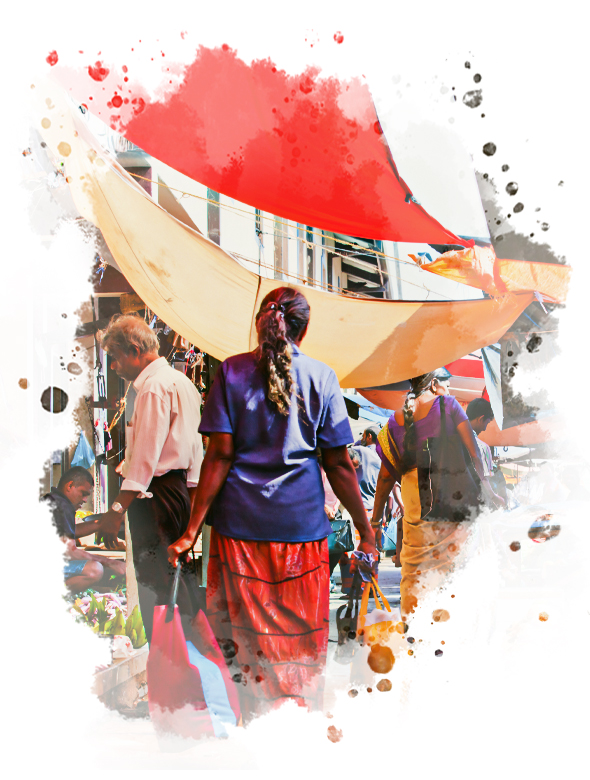
Colombo, Sri Lanka
Things to do, weather & itineraries
The southwest of Sri Lanka is home to a buzzing metropolis of businesses, shopping complexes, and recreational spots that merge into a singular cityscape, forming the island’s commercial capital. As a melting pot of cultures, the city of Colombo stands as the culmination of years of development, and its interplay between tradition and modernity makes it a must-see on every itinerary.
Once known as “The Garden City of the East”, Colombo has evolved from a mere stopover to a thriving city with its own charms. Its main attractions include a stroll through the busy streets of the Pettah Market, a journey through time at the Independence Memorial Hall, and a visit to the Gangaramaya Temple for some spiritual reflection before winding down at Galle Face Green.
The average daytime temperatures in Colombo range from 25°C to 30.8°C (77°F to 87.4°F), with the heat reaching an all-time high in April. Due to this, most travellers tour the city in the period between mid-December and mid-April to experience the best weather without heavy rainfall.
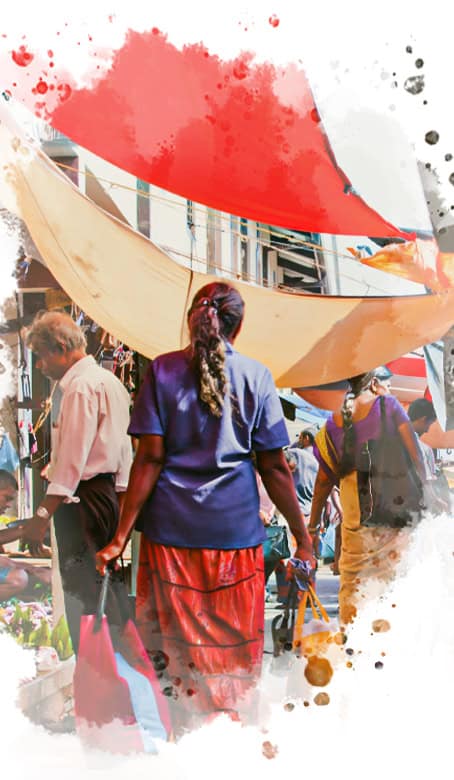
Colombo, Sri Lanka
Things to do, weather & itineraries
The southwest of Sri Lanka is home to a buzzing metropolis of businesses, shopping complexes, and recreational spots that merge into a singular cityscape, forming the island’s commercial capital. As a melting pot of cultures, the city of Colombo stands as the culmination of years of development, and its interplay between tradition and modernity makes it a must-see on every itinerary.
Once known as “The Garden City of the East”, Colombo has evolved from a mere stopover to a thriving city with its own charms. Its main attractions include a stroll through the busy streets of the Pettah Market, a journey through time at the Independence Memorial Hall, and a visit to the Gangaramaya Temple for some spiritual reflection before winding down at Galle Face Green.
The average daytime temperatures in Colombo range from 25°C to 30.8°C (77°F to 87.4°F), with the heat reaching an all-time high in April. Due to this, most travellers tour the city in the period between mid-December and mid-April to experience the best weather without heavy rainfall.
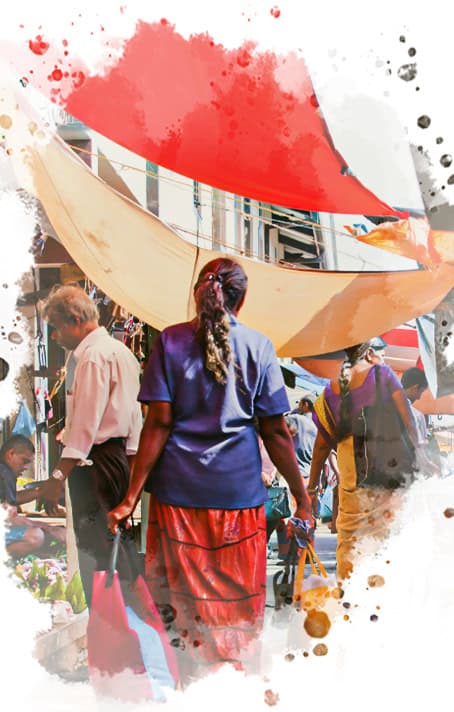
Colombo, Sri Lanka
Things to do, weather & itineraries
The southwest of Sri Lanka is home to a buzzing metropolis of businesses, shopping complexes, and recreational spots that merge into a singular cityscape, forming the island’s commercial capital. As a melting pot of cultures, the city of Colombo stands as the culmination of years of development, and its interplay between tradition and modernity makes it a must-see on every itinerary.
Once known as “The Garden City of the East”, Colombo has evolved from a mere stopover to a thriving city with its own charms. Its main attractions include a stroll through the busy streets of the Pettah Market, a journey through time at the Independence Memorial Hall, and a visit to the Gangaramaya Temple for some spiritual reflection before winding down at Galle Face Green.
The average daytime temperatures in Colombo range from 25°C to 30.8°C (77°F to 87.4°F), with the heat reaching an all-time high in April. Due to this, most travellers tour the city in the period between mid-December and mid-April to experience the best weather without heavy rainfall.
Tour itineraries featuring Colombo
As mentioned before, the main attractions that you can experience in Colombo are the Pettah Market, the Independence Memorial Hall, the Gangaramaya Temple, and Galle Face Green. If you would like to see how these excursions fit into a Sri Lanka tour itinerary, you may refer to the sample itineraries below.
Tour itineraries featuring Colombo
As mentioned before, the main attractions that you can experience in Colombo are the Pettah Market, the Independence Memorial Hall, the Gangaramaya Temple, and Galle Face Green. If you would like to see how these excursions fit into a Sri Lanka tour itinerary, you may refer to the sample itineraries below.
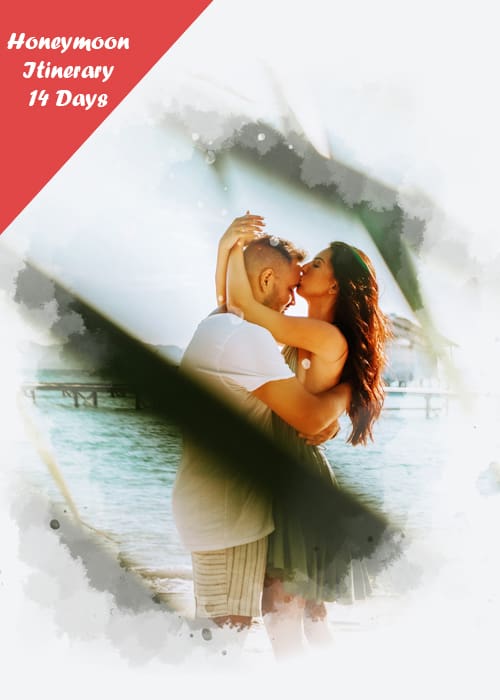
SL & MV honeymoon
Romantic honeymoon in Sri Lanka and Maldives. Celebrate your love with an amazing holiday in the tropics.
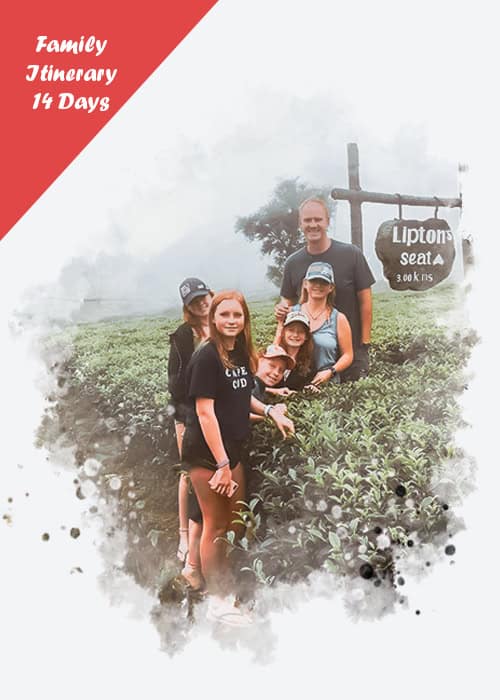
SL & Maldives Family
A perfect family adventure in the picturesque Sri Lanka combined with the pristine beaches of luxurious Maldives.

Sri Lanka Babymoon
Let's celebrate your bundle of joy with a relaxing holiday in the tropical Sri Lanka. Nature, wildlife and relaxation.
Request a Free Quotation
Would you like to get our assistance to organize your Sri Lanka holiday? Drop us a message to get a tailor-made Sri Lanka holiday package that reflects your interests, budget, tour duration and the weather conditions of the month that you visit Sri Lanka.
Things to do in Colombo
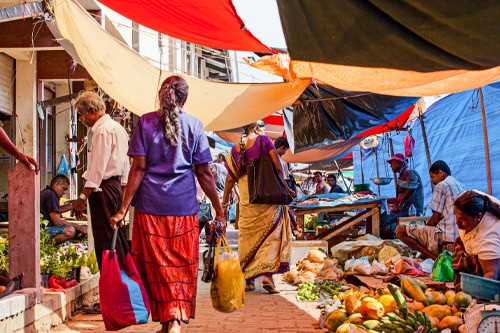
The narrow lanes of Colombo’s old trading district are a gateway to the busiest marketplace on the isle—the famed Pettah Market, where a maze of streets and crowds of shoppers set the scene for what travellers can expect during their tour of the city. As an open-air bazaar, the market provides insight into how the locals earn their livelihood, making it the best place to watch the community in action.
Many consider the Pettah Market to be an overwhelming sensory experience. The kaleidoscope of colours on fabrics, the chatter of locals bargaining over prices, and the constant honking of tuk-tuks driving past are just the tip of the iceberg, and they are accompanied with all kinds of aromas from the little eateries along the way. This bustling spectacle extends over several streets that each sell a different lineup of goods.
For example, Main Street’s stores specialize in leather and clothing, whereas First Cross Street is the locals’ go-to for electronics and watches. Second Cross Street is decked in fabric and cosmetics, and Third Cross Street boasts a selection of electronics and tools, but Fourth Cross Street and Fifth Cross Street sell fresh produce and dried foods. Moreover, Bankshall Street and Gabo Lane offer chemicals and pharmaceutical items while Sea Street has a reputation for its gold and semi-precious stones.
Most tourists visit this attraction to witness the hustle and bustle of the marketplace. That being said, you must keep in mind that many of the branded goods that are on display here are cheap imitations.
The Pettah Market is best toured on foot in the early morning or the late afternoon as this prevents travellers from experiencing the midday heat. Travellers Isle also advises all visitors to be mindful of the narrow lanes and the many vehicles passing by, especially when touring the market with children.
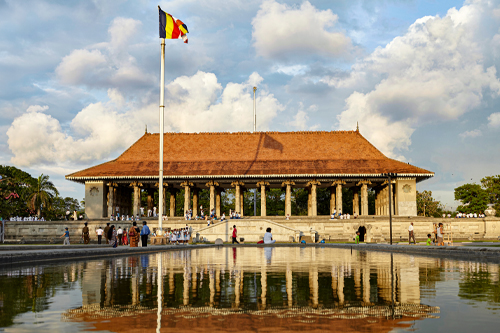
The fast-paced lifestyle in the city slows to a halt at the Independence Memorial Hall, where manicured lawns provide respite from the busy streets while documented records of Sri Lanka’s past offer glimpses of the country’s struggle for independence. Formerly known as Torrington Square, this national monument celebrates the island’s independence from the British, which was achieved on the 4th February, 1948.
Of the three sections that make up this monument, the assembly hall stands as an architectural feat with a structure that is supported by 60 granite pillars of complex designs. Its layout was inspired by the audience hall of the Kingdom of Kandy, which was incidentally where the Kandyan chieftains surrendered the island to the British in 1815. Therefore, the existence of the assembly hall within this monument represents the island’s struggle to reclaim its identity.
Yet another highlight of this attraction is its museum which documents the country’s fight for independence. It includes a commemoration gallery of war heroes and stone busts of the rebel leaders that fought against the British, as well as several panels with information on local monuments and past rulers.
While the assembly hall and museum are revered by history buffs, the square connects to a wide lawn with a manicured garden and clean pathways that are frequented by civilians who wish to unwind after work. One may also find families munching on local delicacies purchased from the cafes and eateries nearby.
The serene ambience that surrounds this monument makes it the ideal spot for a breather, and it is best visited in the late afternoon for some much-needed peace and quiet. However, please note that you will be asked to pay a small fee to be granted entry to the museum that is located in the basement.
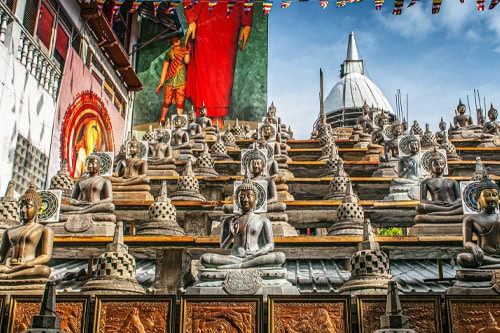
With a history that is rooted in the late 1800s, the Gangaramaya Temple overlooks the glistening waters of Beira Lake, and its structure boasts a harmonious blend of architectural styles that originate from China, Thailand, India, and Sri Lanka. Although it cannot be compared with the centuries-old temples that are scattered around the isle, this temple is the most renowned of its kind in Colombo, and it houses a variety of Buddhist and Hindu relics from across the globe.
Statues of Lord Buddha and murals depicting his birth adorn every corner, and the ornate sculptures of Hindu deities along the way highlight the longstanding relationship between Buddhism and Hinduism. This sets the scene for what travellers can expect to see at the attached museum, where ancient coins, carvings of Hindu gods and goddesses, and the smallest Buddha statue on the isle have been preserved along with other artifacts. The museum also showcases a few vintage cars that are bound to pique one’s interest.
Apart from its artifacts, the temple contains a gallery with photographs of Buddhist paintings, all of which have been arranged according to their historical periods. Travellers will have an opportunity to acquaint themselves with Buddhist art and observe its evolution from the 3rd century BC to the 21st century AD—a feature that has made the temple particularly popular among art enthusiasts.
The Gangaramaya Temple also leads to the quieter Seema Malaka Shrine which stands at the centre of Beira Lake, seemingly floating atop its waters. This shrine was reconstructed in the seventies, and its design was supervised by one of Sri Lanka’s most renowned architects, Geoffrey Bawa. As a site of both meditation and rest for monks, the shrine is a road less travelled, and it is often overlooked by those who are short of time. Despite this, it exudes a tranquillity that cannot be found elsewhere.
While the temple has no entry fee, you will have to pay a small sum to access its museum. Moreover, you must comply with the temple dress code, which requests that all visitors dress modestly before entering the premises. Men and women alike must conceal their bare arms and shoulders while wearing knee-length skirts or trousers.
If your tour of Colombo is slated for February, you may have the opportunity to witness the Gangaramaya Navam Perahera during the February full moon. During this festival, the piercing cry of oriental instruments resounds in the air as sword dancers, fire-eaters, whip-crackers and other stuntmen lead a colourful procession, showcasing the island’s rich culture through music and dance.
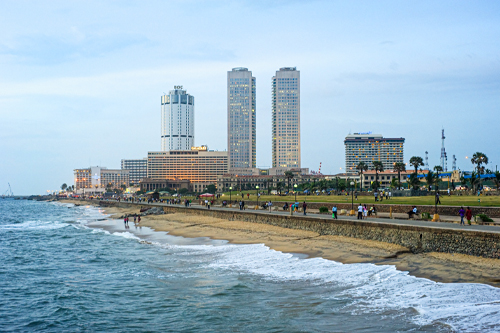
The heart of Colombo is home to the oceanside park known as Galle Face Green, which doubles as a rendezvous point for locals and tourists to catch a breather from the concrete jungle of Sri Lanka’s commercial capital. Covering a distance of five hectares, the park is split into lush lawns with spectacular views of the Indian Ocean and a promenade lined with stalls that are known for selling mouth-watering street food.
While there are various tales surrounding the park’s inception, historical records have revealed that it was originally a narrow stretch of land used by the British garrison. The construction of the promenade was completed in 1859, and it was then dedicated to the residents of Colombo by the British Governor of Ceylon, Sir Henry Ward. As time passed, various other facilities were added, ranging from a golf course and a racecourse for horses to a vast lawn for social gatherings.
With its serene atmosphere by day and a lively ambience by night, parents can be seen watching their children fly kites here while friends and lovers share bites of local delights to celebrate the end of yet another busy workday. For travellers, however, the highlight of this attraction is its street food, where they may tantalize their taste buds with fresh cassava chips and koththu roti (shredded flatbread served with vegetables and meat) or isso vade (fried lentil cakes topped with prawns).
Most travellers visit Galle Face Green in the evening, as this gives them an opportunity to watch the sunset by the beach and laze around with their families before ending the day with a delicious snack or dinner from one of the many restaurants nearby.
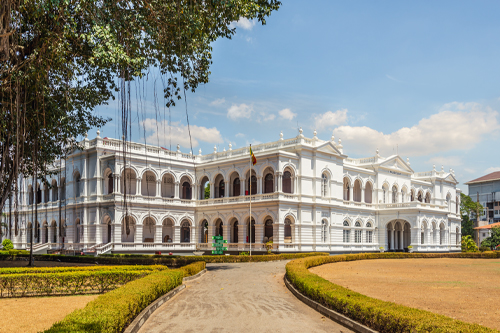
Established in 1877, the Colombo National Museum stands as the largest of its kind on the isle with an impressive collection of artifacts that are a testament to the country’s perseverance over time. As one of the city’s most frequented attractions, this museum paints a vivid picture of Sri Lanka’s distant past, and it documents the cultural shifts that have fashioned the country into its present state.
Of the fifteen galleries that occupy its two floors, the first focuses on the pre and proto-historic periods, where skeletal remains and stone tools provide insight into the country’s ancient civilization. On the other hand, galleries two to five contain ceremonial swords, statues of Lord Buddha and Hindu deities, along with other relics that can be traced back to the rule of the Sinhalese kings.
The remaining galleries showcase other collections that offer glimpses into the island’s past glories, such as ritual masks, textiles, coins and currency, ceramics, weaponry, and handicrafts. This makes it quite the sight to behold during your travels, and it may require 2 to 3 hours of your time, especially if you wish to admire all of its exhibits at a leisurely pace.
Most travellers conclude their museum tour with a hearty meal at the nearest café that is situated within the premises, or they may visit the gift shop and purchase a few souvenirs to commemorate the occasion.
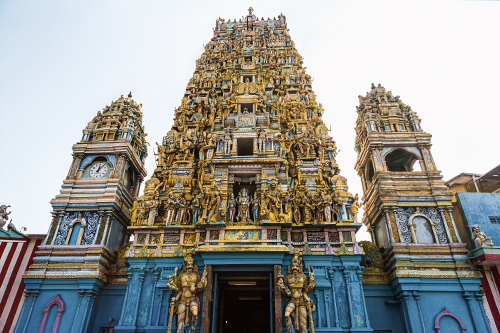
While the metropolis buzzes with activity, the suburbs lead to an oasis of calm in the kovils of Captain’s Garden, where murmured prayers and offerings of both flowers and fruit provide insight into Hindu customs. Locally known as the Sri Bala Selva Vinayaga Moorthy Kovil and the Sri Kailawasanathan Swami Kovil, the two Hindu temples of this complex were constructed in the 1700s, making them the oldest of their kind in Colombo.
As the larger of the two, the Sri Kailawasanathan Swami Kovil venerates the god of destruction, Shiva. Its construction is credited to South Indian merchants, particularly to a man who vowed to build a temple for Shiva in exchange for a child. On the other hand, the Sri Bala Selva Vinayaga Moorthy Kovil is dedicated to Lord Ganesh, to whom many pray for prosperity and good luck.
The entrances to these temples are marked by grand Gopurams (ornate towers), and every path inside leads to statues of different deities and colourful murals that depict scenes from Hindu mythology. Travellers are thus able to visualize the gods and goddesses of Hinduism as they take comfort in the tranquillity that the temples provide.
Please note that you must comply with the Hindu temple dress code to gain entry to this religious site. Generally, men are requested to wear either trousers or sarongs while remaining bare-chested, whereas women must conceal their bare arms, shoulders and legs to show their respect. Photography is also permitted inside at a small cost.
It is also important to note that the doors of these kovils are open from 7AM to 11AM, and from 6PM to 9PM. Due to this, most travellers opt for a morning visit and spend their evenings exploring Colombo’s other attractions instead.
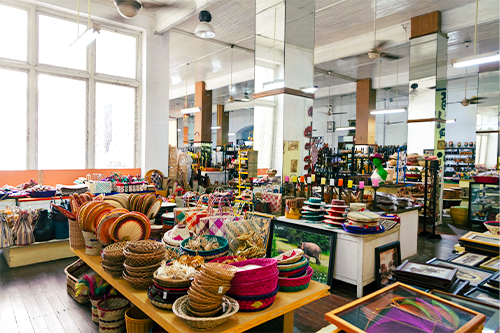
Apart from its many attractions, Colombo is home to a variety of showrooms and shopping complexes that make it a favourite among shopaholics, thus positioning the city as one of the best places for a shopping tour. Of the many souvenirs that can be purchased here, most tourists opt for porcelain giftware and paintings, and they generally visit the department stores in the vicinity for a selection of local and international brands.
Those who wish to buy porcelain giftware may browse the collections on display at Noritake Lanka Porcelain and Dankotuwa Porcelain. Noritake Lanka Porcelain is especially favoured by many, as it is a joint venture between the famed Noritake company of Japan and the Ceylon Ceramic Corporation, and this places its giftware at the top of the global ceramics market. Meanwhile, the renowned Dankotuwa Porcelain has spent over 40 years in the industry, and its exquisite and timeless pieces are the perfect addition to your souvenir collection.
The busy streets of Colombo also lead to Green Path, where makeshift stalls on Nelum Pokuna Art Street brim with landscapes and portraits that have been painted by students and educators from nearby universities. There are plenty of rare finds here, and a look at what these stalls have to offer may be just what you need to develop a newfound appreciation for the arts.
On the other hand, the Colombo City Centre and the ODEL Department Store are two of the city’s most famous shopping complexes. As they are quite large in size, it is possible to spend several hours browsing through their selection of designer clothes, jewellery, and giftware before concluding your shopping tour with a snack at the nearest food court.
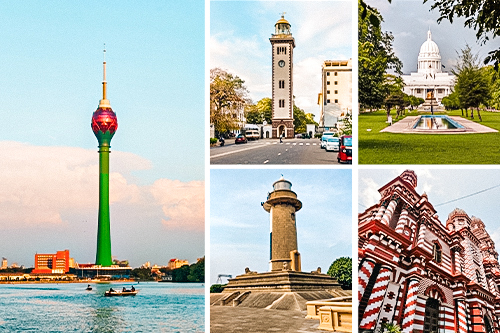
Although Colombo’s main attractions take centre stage when touring the city, there are several other noteworthy sites that are well worth a visit during your time on the isle. These landmarks include the Clock Tower, the Lighthouse, the Lotus Tower, the Jami-Ul-Alfar Mosque, and St Anthony’s Shrine, all of which may be viewed from the comfort of your tour vehicle or require a short walk around the premises.
At the forefront of these landmarks is the Colombo Clock Tower, which stands as one of the many remnants of the country’s colonial past. Originally constructed in 1857, this landmark was the tallest structure in the city during the British takeover, and it doubled as a lighthouse until the buildings nearby grew in size and obstructed its light. Its clock mechanism is credited to the reputed English clockmakers, Dent, but it was replaced in 1914 when it could no longer be repaired.
On the other hand, the Colombo Lighthouse at Galbokka Point towers over the city’s waterfront at a height of 95 feet. Built in 1952, the base of this landmark is adorned with four statues of lions that keep a close watch over the city from different directions. That said, the lighthouse’s most fascinating feature would be the checkered black-and-white pattern that has been painted over the side that faces the sea.
The Lotus Tower is a recent addition to Colombo’s attractions, and its height of 356 metres makes it the tallest structure in South Asia. With a shape that resembles a lotus, this tower houses a digital art museum, observation deck, conference centre, and an Esports arena, but it is best known for its revolving restaurant where visitors may dine with a 360-degree view of the city.
There is also the Jami-Ul-Alfar Mosque, which is revered as one of the oldest mosques in Colombo. The red and white patterns of its exterior are its most distinct feature, and many have compared its appearance to a pomegranate that has been split in two. Its architecture blends neo-classical and Indo-Islamic styles, setting it apart from the other mosques that are on the isle.
Lastly, St Anthony’s Shrine in Kochchikade stands as the pinnacle of Renaissance architecture in Sri Lanka. This Catholic Church attracts a sizeable crowd of all faiths, and many come here for a glimpse of its sacred relic—a piece of St Anthony’s incorrupt tongue that has been encased in glass. As it is one of the churches that were targeted during the Easter Sunday attacks of 2019, the site also contains a room where the names of the deceased victims have been etched on stone.
Frequently Asked Questions
1. Is Colombo in Sri Lanka worth visiting?
Absolutely. A trip to Sri Lanka is not complete without a visit to Colombo, where the past, present, and the future merge to form a cityscape of historical sites and newer attractions. As a tourist hotspot, Colombo showcases a blend of tradition and modernity through its displays of culture and heritage, all of which are scattered around the high-rise buildings and the bustling streets.
A stroll through the city draws attention to its fast-paced environment, and the maze-like streets of its open-air bazaar are ideal for watching the local community in action. On the other hand, its museum tours are a prelude to what you can expect when visiting the ancient cities of the isle. In fact, the information provided within each gallery will fill in the blanks and answer any questions you may have about the country’s monuments.
Colombo’s recreational spots are also a much-needed oasis of greenery in the concrete jungle, where travellers may relax and reflect on their journey so far. This calming ambience extends to its religious sites that are each steeped in a rich history, and so, visitors may witness the devotion of the community while learning about the locals’ religious practices.
Thus, it goes without saying that Colombo is well worth a visit during your stay, and it may even serve as a bite-sized introduction to the island if it is the first stop on your itinerary.
2. What is Colombo famous for?
As the commercial capital of Sri Lanka, Colombo gets its fame from its seaport as well as the many businesses and government offices that are stationed within the city limits. That being said, its history and its assortment of attractions are its greatest selling points, making it a popular pick among tourists.
Historical records have revealed that the city was originally named Kolamba, and that the majority of its trade was initially handled by a community of Moors. However, the colonial takeovers resulted in the seizure of the port, and all forms of trade were overseen by the Portuguese, the Dutch, and the British for quite some time. Colombo then became the country’s capital after the Kandyan chieftains surrendered control of the island to the British in 1815, and its fame has grown ever since.
Of its many attractions, the most frequented Pettah Market is renowned for its wide range of goods. Not only is it ideal for photographing the locals, but it also provides a better understanding of how hard the community works to earn their daily income.
Meanwhile, the Independence Memorial Hall immortalizes the leaders of rebellions that occurred when the island was under the rule of the British. The few exhibits of its basement museum draw attention to the country’s precolonial and postcolonial past, boosting its fame among history buffs who are intrigued by Sri Lanka’s struggle for independence.
The Gangaramaya Temple combines spirituality with history, showcasing the longstanding relationship between Buddhism and Hinduism. As of late, its popularity has surged due to its photo gallery of Buddhist paintings that demonstrates the evolution of Sri Lankan art over time.
Lastly, the trimmed lawns of Galle Face Green and its attached promenade draw a sizeable crowd to admire the sunset by the beach. Open to travellers of all ages, this attraction has a reputation for its local delicacies which are extremely popular among tourists. Many choose to wind down here and enjoy the sea breeze while munching on some of the nation’s best street food for reasonable prices.
3. How long should I stay in Colombo?
At most, you will need a day to visit some of Colombo’s main attractions at your leisure. However, if you wish to experience most of what this city has to offer and you have enough time to spare, you may extend your stay by an extra day.
4. Does Colombo have a beach?
Yes, it does. Colombo is home to several beaches, but they are not very tourist friendly. Truth be told, they lack the range of activities that can be experienced when visiting the other beaches on the isle, and they are not particularly scenic either.
For the best of Sri Lanka’s beaches, Travellers Isle recommends travelling down south (Hikkaduwa, Bentota, Unawatuna, Tangalle, Mirissa, etc.) or paying a visit to the east coast (Nilaveli, Trincomalee, Pasikuda, etc.).
5. Is it safe to visit Colombo now?
Of course. There are no wars underway in Colombo, and there are absolutely no health concerns that you should be aware of. That being said, Travellers Isle recommends exercising some caution when touring its busy streets by being mindful of the oncoming traffic.
More Tips for Your Holiday
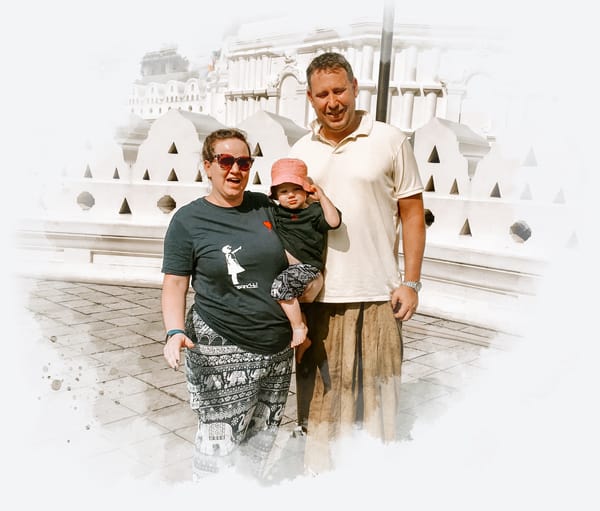
"We have had our amazing driver taking us around Sri Lanka with our 15 month old daughter for the last two weeks. Everything has been organized for us and everything has been perfect.Anyone thinking about going to Sri Lanka with their little ones should book with Travellers Isle. Nothing has been too much trouble for them. All hotels have been fabulous and our driver has been so helpful, amazing with our daughter, professional and knowledgeable."
